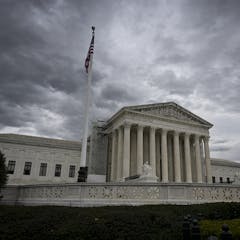
Articles on COVID-19 pandemic
Displaying 1 - 20 of 331 articles

Widespread closures mean gay nightlife has been forced to change, but something more exciting is evolving in its place, according to a new book.

New research shows that even after Facebook made changes to stem the tide of dangerous pandemic misinformation, some accounts continued to thrive.

Representing 2% of global GDP, the fashion industry must use its cultural reach to drive a shift towards a more sustainable and equitable industry.

These cases have asked the justices to consider how to apply some of the most sweeping constitutional protections – those of free speech – to an extremely complex online communication environment.

The four Cs – convenience, choice, competitive prices and COVID-19 – will decide the retail battle and how it affects the structure and function of our cities.

A trauma-informed therapist discusses how grief affects the brain and highlights the role of a sixth stage of grief – finding meaning – in the healing process.

If more Canadian fathers are to harness the benefits of parental leave and remote work, we need to design employment and care policies in ways that recognize every family’s unique needs.

To boost post-pandemic math learning, a multi-dimensional approach is needed that promotes the success of the whole child: academic, physical and socio-emotional.

The three flu pandemics of the 20th century originated from birds, making it critical to fight bird flu. Breakthroughs in gene-editing chickens show promise for eliminating the disease in the future.

Insights from youth about COVID-19 school closures and youth exclusion from pandemic-related decisions suggest we have an opportunity to improve how we support youths’ rights.

Developers have overbuilt office and commercial space in US cities for decades. Now, in the wake of pandemic shutdowns, many downtowns face hard choices about the future.

COVID-19 halted immigration and housing affordability got much worse. We’d feel the impacts of internal migration and undersupply of affordable housing even if we again blocked migrants from overseas.

The COVID-19 pandemic may have played a considerable role in the uptick of adults being treated for ADHD. But more data is needed to determine whether the trends will continue.

Interest in bird feeding surged soon after COVID lockdowns began in more than 100 countries. While this activity boosts people’s wellbeing, care must be taken to ensure it’s also good for the birds.

The health coverage program’s enrollment soared during the three years after March 2020 due to temporary policies adopted at the start of the COVID-19 pandemic.

The latest revised data challenge the popular narrative about a population renaissance for regional Australia and for states and territories that were losing residents to other parts of the country.

New research shows that preventable deaths are increasing in the US at the same time that life expectancy keeps dropping.

Female characters in Greek mythology lived under strict patriarchal rules, but they spoke truth to power and resisted injustice.

With the emergency phase of the COVID-19 pandemic in the rearview mirror, at least for now, we look back on a handful of stories that provided sharp insights at key moments in the pandemic.

With a surge in people seeking help amid a cost-of-living crisis, volunteer groups urgently need to rebuild their numbers to meet the demand for their services.
